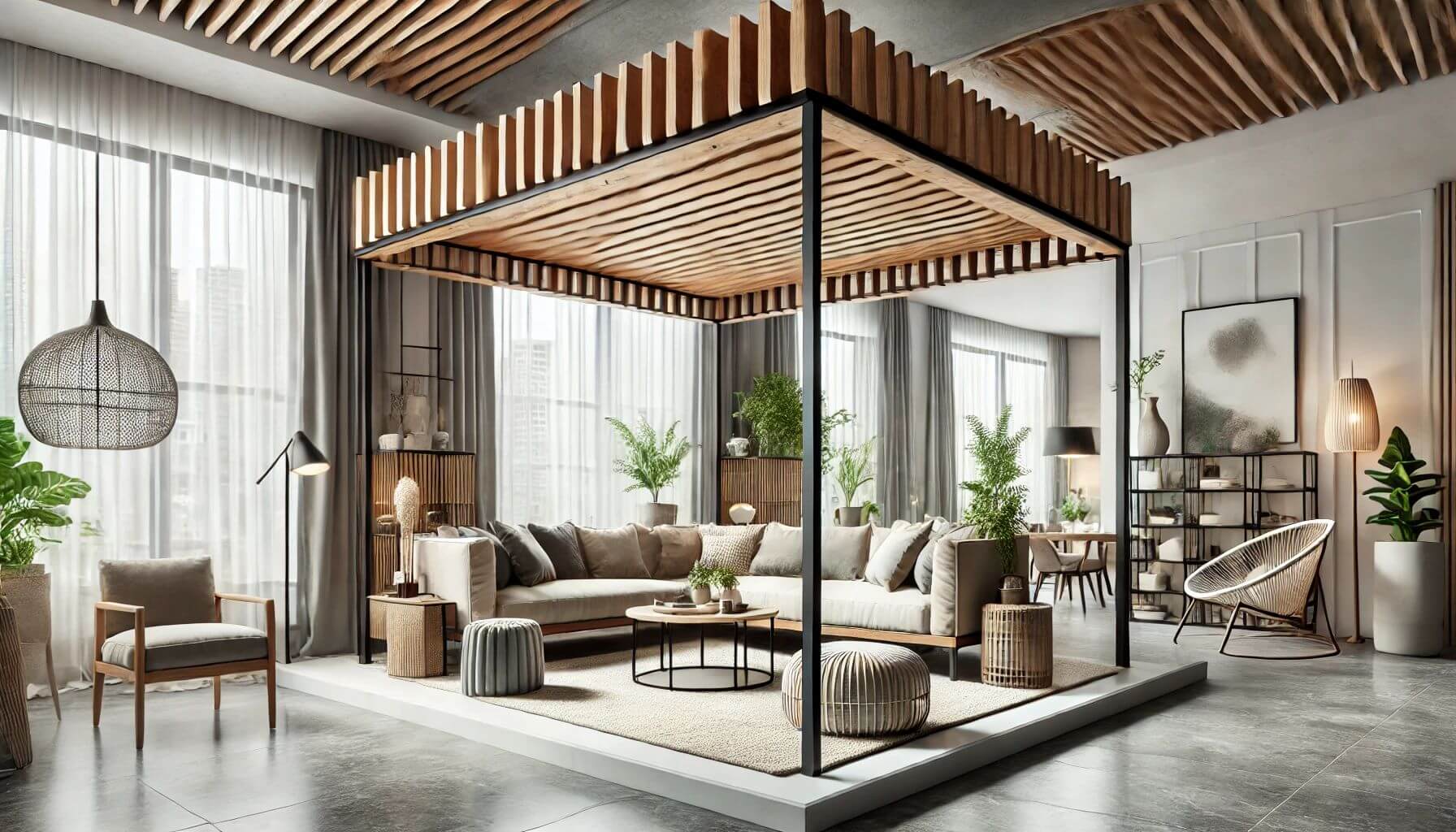
When incorporating a pergola into your living room design, it’s important to strike a balance between style and function. You want the structure to enhance the aesthetic of the space while also serving a practical purpose. Whether you’re looking to create a cozy reading nook, define a seating area, or add architectural interest, a well-designed indoor pergola can do it all.
The key is to consider your living room’s existing style and layout, and choose a pergola design that complements and enhances those elements. With thoughtful planning and attention to detail, you can create a stunning and functional focal point that transforms your living space.
Defining the Purpose
Before you start designing your living room pergola, it’s important to define its purpose. What do you want the structure to achieve in the space? Some common functions of indoor pergolas include:
- Creating a cozy reading nook or relaxation area
- Defining a seating or conversation area
- Adding architectural interest and visual height to the room
- Providing a framework for lighting or hanging decor
- Dividing an open floor plan into distinct zones
Once you have a clear idea of the pergola’s purpose, you can start designing a structure that meets those functional needs while also enhancing the room’s style.
Complementing the Room’s Aesthetic
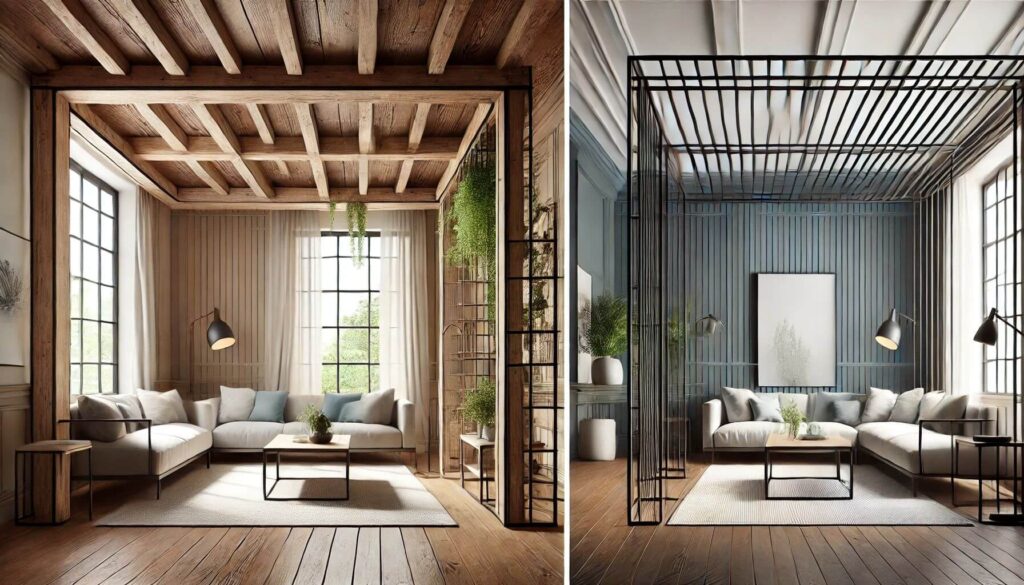
An indoor pergola should complement and enhance your living room’s existing aesthetic, not compete with or distract from it. Consider the room’s overall style, color palette, and architectural features when choosing materials, finishes, and design elements for your pergola.
For example, in a rustic or farmhouse-style living room, a pergola made of reclaimed wood with chunky, rough-hewn beams would fit right in. In a more modern or minimalist space, a sleek metal or painted wood structure with clean lines would be more appropriate.
The pergola’s color and finish should also coordinate with the room’s palette. You could match the structure to existing wood trim or furniture, or choose a contrasting hue for a bold accent. Just be sure the pergola harmonizes with the overall look and feel of the space.
Choosing the Right Scale
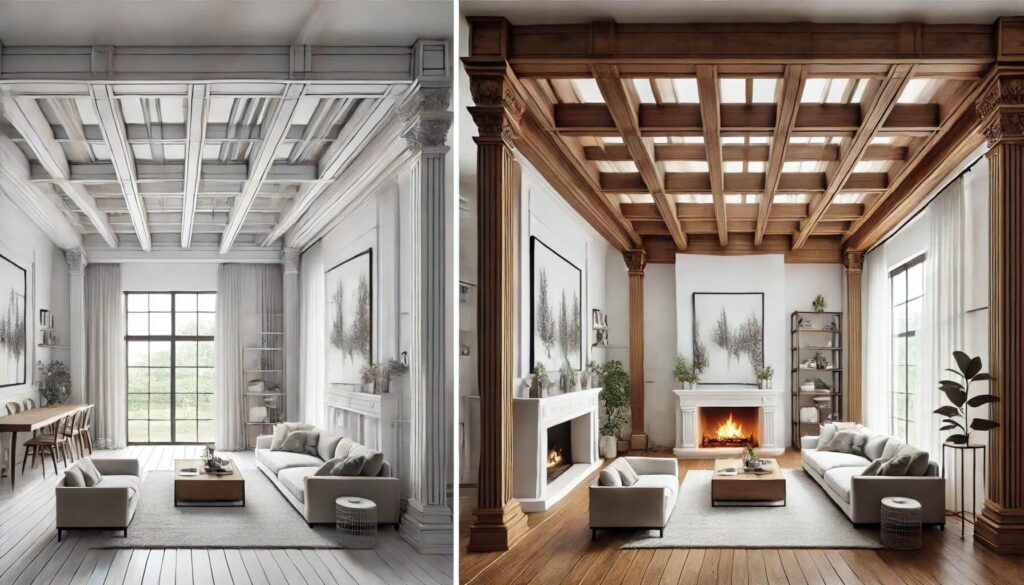
The scale of your living room pergola is another important consideration. You want the structure to be proportionate to the room and its furnishings, neither too small nor too overwhelming.
Consider the room’s size, ceiling height, and layout when determining the pergola’s dimensions. In a smaller living room or one with low ceilings, a more compact, streamlined structure may be the best fit. In a larger, open-concept space, a more substantial pergola with thicker beams and posts can make a bold statement.
Also think about how the pergola will relate to the room’s existing features, such as fireplaces, windows, or built-ins. The pergola should frame and enhance these elements, not block or compete with them.
Incorporating Lighting and Decor
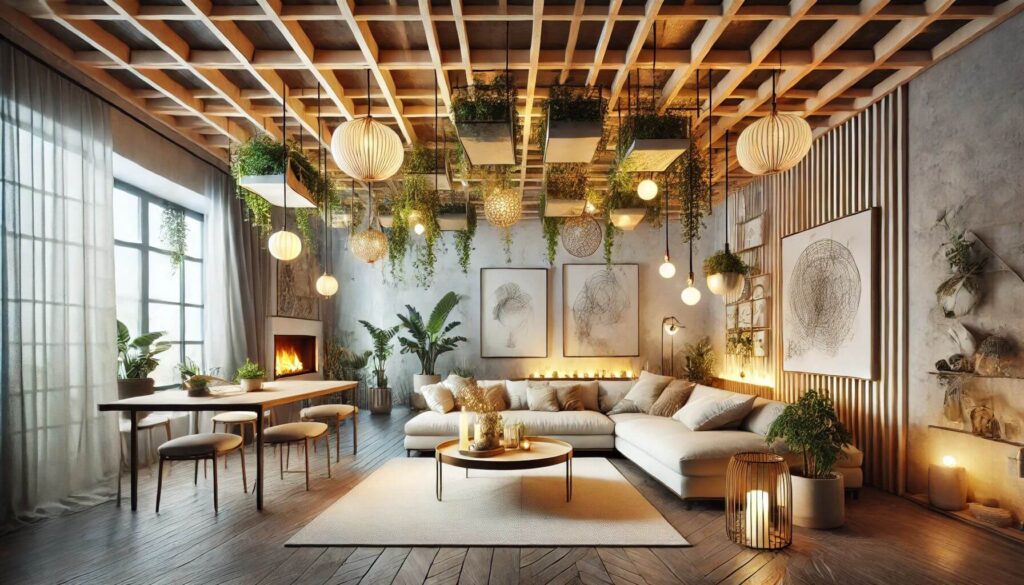
One of the benefits of an indoor pergola is the opportunity to incorporate lighting and decor in creative ways. The structure provides a framework for hanging pendant lights, chandeliers, or string lights, adding both function and ambiance to the space.
You can also use the pergola to display hanging plants, artwork, or other decorative elements. Just be sure not to overload the structure or create visual clutter. Choose a few key pieces that complement the pergola’s style and the room’s overall aesthetic.
When it comes to lighting, consider the pergola’s purpose and the desired mood for the space. Soft, diffused lighting from string lights or shaded pendants can create a cozy, intimate atmosphere for a reading nook or conversation area. Brighter, more focused lighting from track lights or spotlights can highlight artwork or architectural features.
Maximizing Functionality
While style is important, an indoor pergola should also be functional and practical. Consider how you can design the structure to maximize its usefulness in your living room.
For example, if you’re using the pergola to define a reading nook, incorporate built-in bookshelves or a window seat for added storage and seating. If the pergola is framing a conversation area, include comfortable seating and side tables for drinks and snacks.
You can also use the pergola to mount a TV or hang curtains for added privacy and coziness. Just be sure these functional elements integrate seamlessly with the pergola’s design and the room’s overall aesthetic.
Blending with the Outdoors
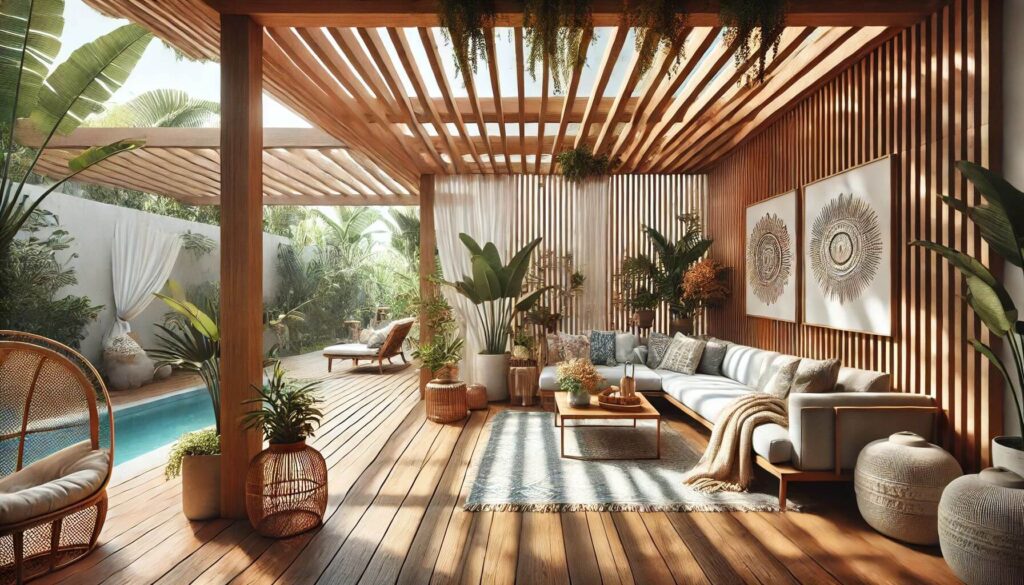
If your living room has access to the outdoors, an indoor pergola can be a great way to blend the two spaces and create a seamless transition. By echoing the style and materials of an outdoor pergola or patio, you can create a cohesive look that draws the eye outside.
For example, if you have a wooden deck or pergola in your backyard, using the same wood species or stain color for your indoor pergola can create a sense of continuity. Or, if your outdoor space has a tropical or bohemian vibe, incorporating similar plants, textiles, and decor elements into your indoor pergola can bring that feel inside.
Style and Function in Living Room Pergolas
Balancing style and function is key when incorporating a pergola into your living room design. By defining the structure’s purpose, complementing the room’s aesthetic, choosing the right scale, incorporating lighting and decor, maximizing functionality, and blending with the outdoors, you can create a stunning and practical focal point that enhances your living space.
Remember, an indoor pergola is a versatile and customizable design element. Don’t be afraid to get creative and put your own spin on it. With thoughtful planning and attention to detail, you can create a living room pergola that perfectly suits your style and meets your functional needs.



